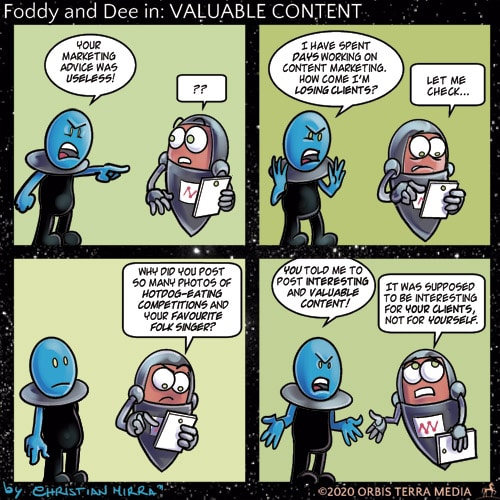Valuable Content

How do we measure whether our content is valuable?
One common problem that crops up time and time again in content marketing is how to find fresh content ideas. The easiest solution is to select topics that matter to you – the individuals and businesses that are producing the content.
But what matters to you is not necessarily what matters to the most important people in this equation: your customers.
The Importance of Empathy
We need more empathy in content marketing – meaning an understanding of what makes our customers tick. Content that resonates deeply with the audience is more valuable for both the reader and the business.
Bob Gilbreath, author of The Next Evolution of Marketing, says, “If brands’ messages can add meaningful value to the lives of those who receive them, then those messages will be shared – effecting change not just in the consumer but in their community too”.
While empathy is the key foundation of any marketing effort and can help us to understand what might be of interest to our target audiences, it isn’t enough alone. It must be paired with another useful tool for producing content that is valuable to our audiences: data.
What is Valuable Content?
Is it possible to be objective when it comes to content marketing? Is it possible to understand the intrinsic value of a piece of content?
Yes – today’s content marketer has a wealth of information available to them that can help to objectively measure the value of each piece of content produced. Engagement metrics can tell us exactly how valuable our content is to our audiences. Clicks, heat maps, downloads, responses, contact… they are all indicators of traction and value.
The Virtuous Circle of Content Marketing
If traction isn’t happening, then it’s likely that the things you are talking about aren’t resonating with your audiences.
Here, the data can help. We can measure the things that don’t work – and do less of them. We can measure the things that do work – and do more of them. And we can continually refine and adapt, fine-tuning our understanding of what makes our audiences tick – and what content they will find valuable – as we go.
By measuring, adapting, testing and talking, we can create a virtuous circle of feedback that gives us an opportunity to continually understand and enhance the value of our content.

